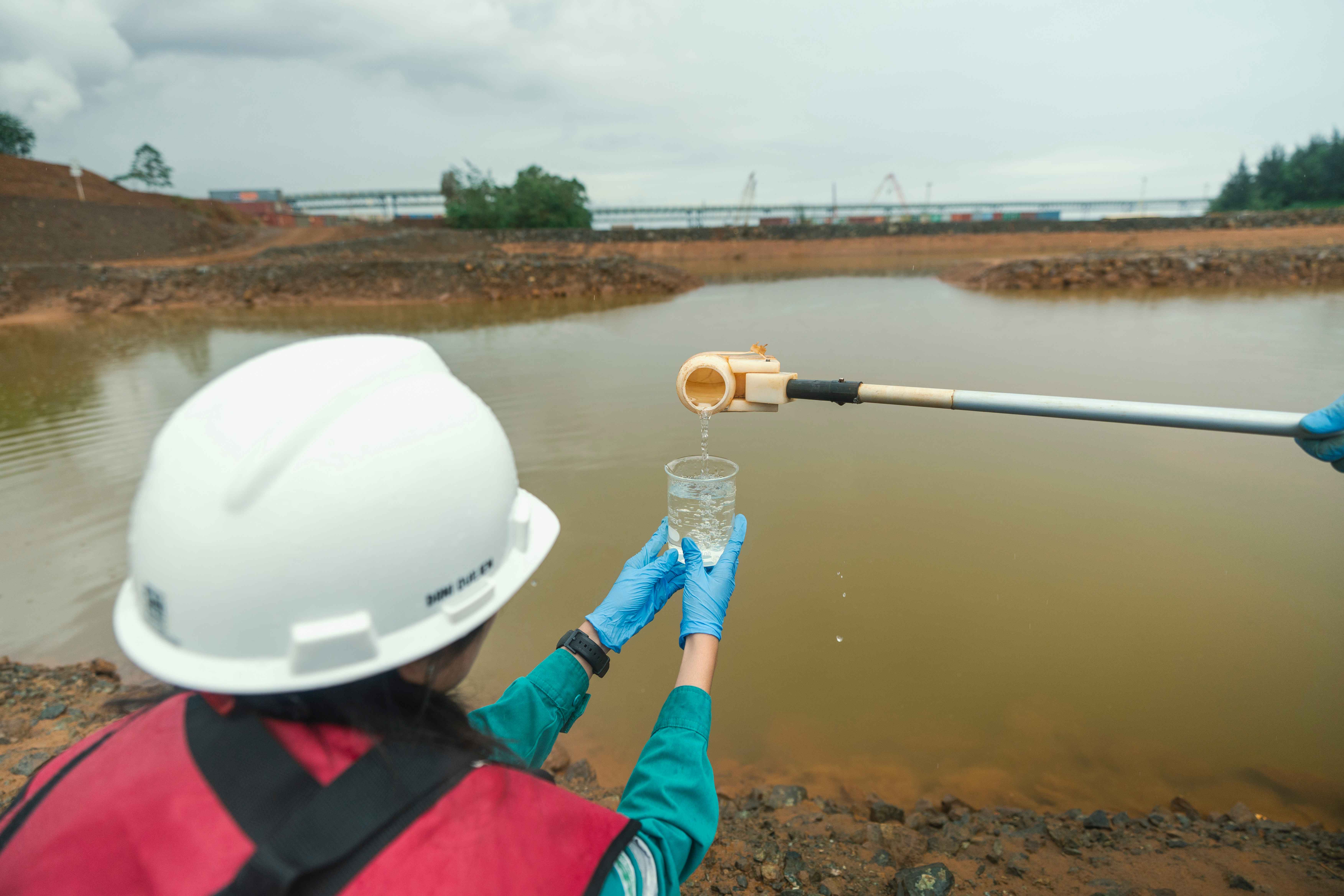


05 November 2024
Harita Nickel’s mining and nickel ore processing operations are deeply committed to environmental safety, particularly in ensuring that the water discharged from mining areas poses no threat to the surrounding ecosystems. Given that the company’s operational areas border vital aquatic zones, which are home to diverse marine life and crucial to the livelihoods of local fishermen, this commitment takes on added urgency.
To protect the quality of water leaving the mine, the company has created 52 settling ponds across two mining licenses. Thirty-five of these ponds are managed by PT Trimegah Bangun Persada, and the other seventeen by PT Gane Permai Sentosa. The largest pond, Tuguraci 2, has a capacity of 924,000 cubic meters and covers an area of 43 hectares.
Muhamad Riftadi Hidayat, a Senior Mine Hydrology Engineer at PT Trimegah Bangun Persada Tbk, highlights the importance of settling ponds in capturing sediment from soil, rock, and other materials eroded by mining. If not managed, these particles could pollute the environment. “These ponds are essential for keeping the water clean and safe before it's released back into the waterways,” he says.
The settling ponds are carefully designed to allow water to effectively filter out sediment before it is returned to its natural flow. This process ensures that the discharged water is clear and meets strict government quality standards.
At Harita Nickel, managing the settling ponds involves monitoring water quality parameters like pH and Total Suspended Solids (TSS). Dedicated teams from various business units perform daily checks to ensure they meet strict environmental standards.

Indra Maizar, Environmental Superintendent at PT Halmahera Persada Lygend, explains the importance of regular maintenance. The company regularly dredges the ponds when sediment builds up to 70 percent of their capacity. “When sediment reaches 80 percent, we use heavy machinery to deepen the pond,” Indra says.
Dredging prevents sediment buildup from reducing capacity and keeps the water clear before it flows into places like the Todoku River. “Pond Tuguraci 2 can handle water flow rates of 10,000 to 50,000 cubic meters per hour, even during heavy rain,” he adds. The pond also has a retention time of 10 to 15 hours, which helps ensure that upstream water is clear before being released.
“These ponds clearly show the company’s commitment to protecting the environment around the mine,” Indra says. “They also reflect one of Harita Nickel’s core values: teamwork. All business units will keep working toward sustainability and environmental conservation in our operational areas.”
Go Top